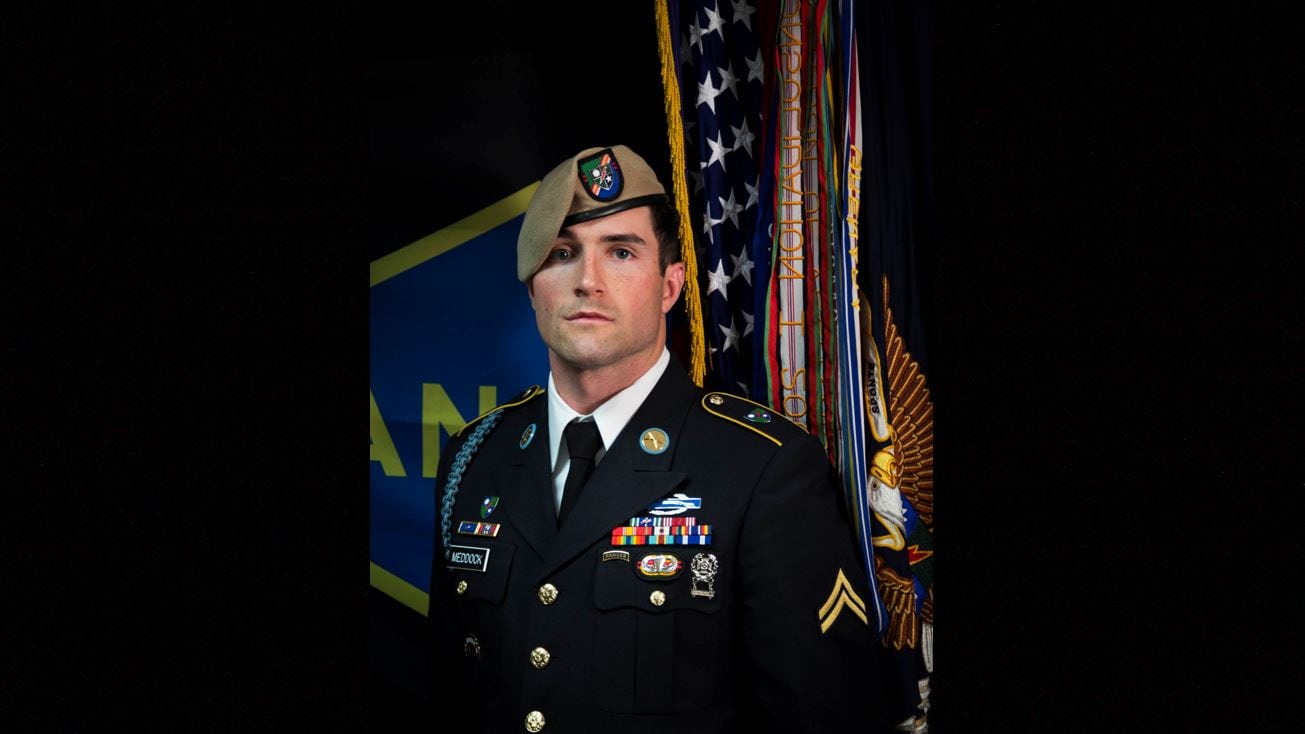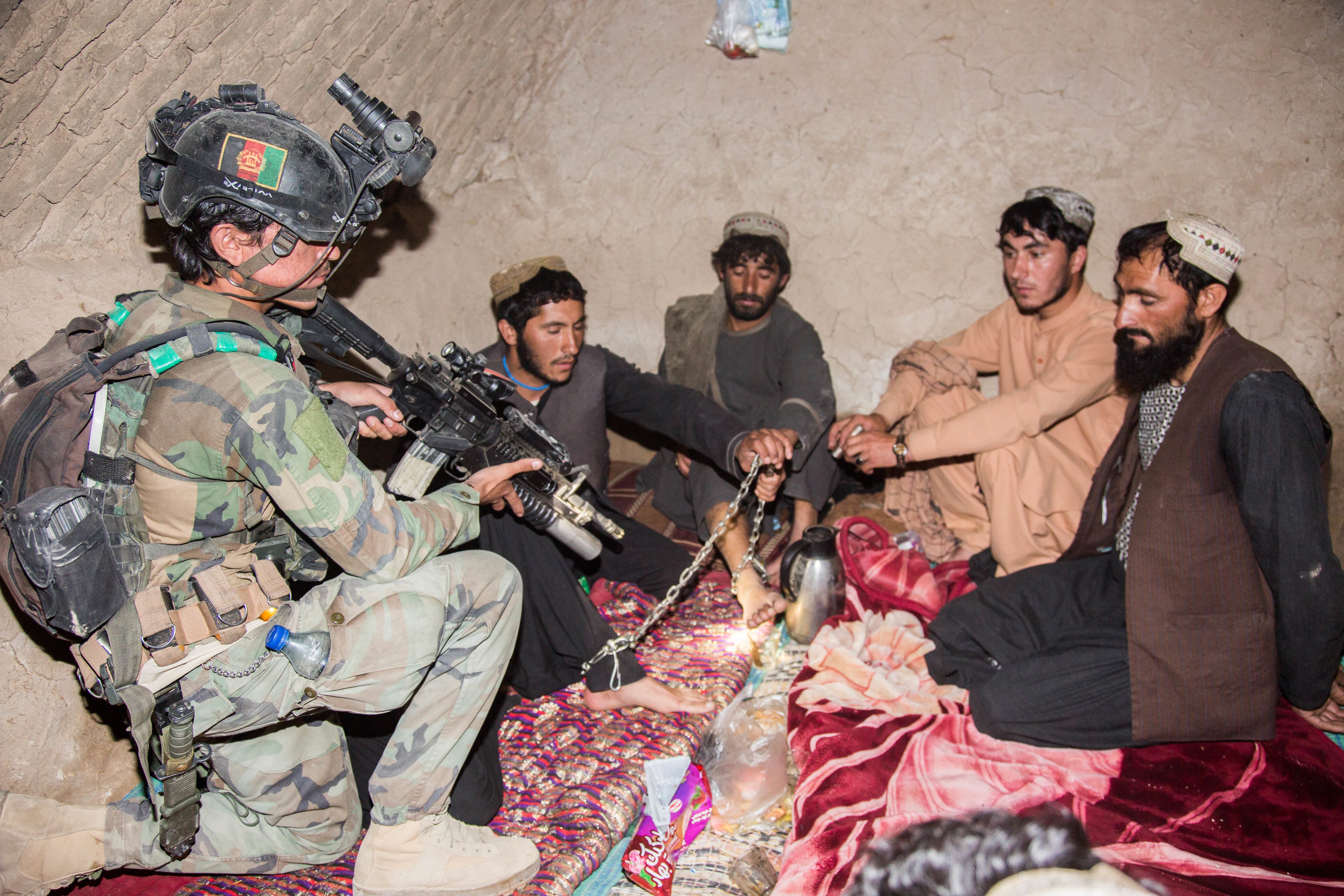An Army Ranger killed in action last winter was fatally wounded during a raid on a Taliban detention facility in Badghis province, Afghanistan, that freed 34 people, including a dozen children and six women, according to an investigation released through a Freedom of Information Act request.
Sgt. Cameron A. Meddock, 26, was fatally wounded by small-arms gunfire Jan. 13, 2019, as multiple combatants fled from a concealed position that he and other Rangers were approaching during the nighttime raid, the investigators wrote. Meddock died four days later at Landstuhl Regional Medical Center in Germany.
Despite the loss, investigators praised the surgical team that medically evacuated Meddock from the battlefield and kept him from succumbing to his wounds on three occasions when his pulse dropped mid-flight.
Anticipating Meddock’s pulse would drop again, the surgical team aboard a helicopter placed a balloon catheter in his aorta, which was then inflated to push blood to vital organs. The challenging procedure prevented Meddock from experiencing another dangerous drop in blood pressure during the flight to Bagram Airfield.
During the raid itself, Meddock was assigned to a quick reaction force. He was on his second deployment to Afghanistan as a member of 2nd Battalion, 75th Ranger Regiment, out of Joint Base Lewis-McChord, Washington.
The Rangers departed Bagram on the night of Jan. 12, 2019, cross-loading aircraft at an unnamed waypoint, and infiltrated via helicopter very early the next morning.
Upon landing in Badghis province’s Jawand district, the team received small-arms fire and the guards at the Taliban detention facility released their prisoners.

The QRF element that included Meddock was asked by the main assault force to help round up the people who were “egressing from the prison, including prisoners and combatants,” the investigation reads.
The QRF also was tasked to pursue a group of six people who ran 500 meters northwest of the target compound. The group of six appeared to be hiding between a tree and the steep banks of a river.
As the QRF closed in, they performed a “callout” intended to get “the Afghan personnel hiding to come out peacefully,” the investigation reads.
After the callout, the QRF soldiers began walking toward the six Afghans, only to be met by gunfire that ultimately struck Meddock in his head.
The Rangers returned fire and called in a danger-close fire mission, though the type of munitions used were redacted in the investigation. The gunfight ended in six enemy fighters killed in action, the investigation stated. Eight other enemy fighters were killed elsewhere during the raid.
RELATED

Meddock was immediately swept for injuries and a medic performed a cricothyrotomy to establish a clear airway for him to breathe.
The soldiers were unable to find a pulse but dressed his head wound and alternated doing chest compressions on their gravely wounded comrade. They wrapped him in a hypothermia blanket and secured him to a litter.
It took roughly 25 minutes for a medical evacuation helicopter to land and whisk Meddock off the battlefield, according to the investigation’s timeline.
Following the MedEvac, the QRF continued the mission, linked up with the assault force and escorted a group of six women and 12 children off the objective area, the investigation stated. Two Taliban fighters were also detained. Whether the women and children were detainees or family members of the guards was not stated in the investigation, but they were listed among the more than 30 non-Taliban fighters released.

Aboard the MedEvac helicopter, a surgical resuscitation team found that Meddock was not experiencing a great deal of blood loss, but his heart rate could not be measured.
They used a slew of techniques, including chest compressions, blood transfusions and epinephrine to resuscitate him, ultimately normalizing his vital signs and bringing his pulse back.
Critically, the investigation noted, the surgical team anticipated the blood pressure would continue to be an issue and placed an endovascular balloon in Meddock’s aorta that could be inflated to regulate his blood flow.
The surgical team inflated the balloon as they gained and lost altitude during their flight to Craig Joint Theater Hospital at Bagram Airfield, a Role III treatment facility, the investigation stated.
Upon landing, an unconscious Meddock was transferred to an ambulance on the flight line and brought into the hospital for a CT scan to determine the extent of his head injuries. A decision was made to further evacuate the young Ranger to Germany, where he would ultimately pass away four days later.
At the time of his death, media outlets reported that Meddock and his wife were expecting their first child, a boy, to be born in May.
Meddock’s death came just months after another 2-75 Ranger, Sgt. Leandro Jasso, was killed during a nighttime raid on al-Qaida senior leader associates in November 2018.
Kyle Rempfer was an editor and reporter who has covered combat operations, criminal cases, foreign military assistance and training accidents. Before entering journalism, Kyle served in U.S. Air Force Special Tactics and deployed in 2014 to Paktika Province, Afghanistan, and Baghdad, Iraq.





